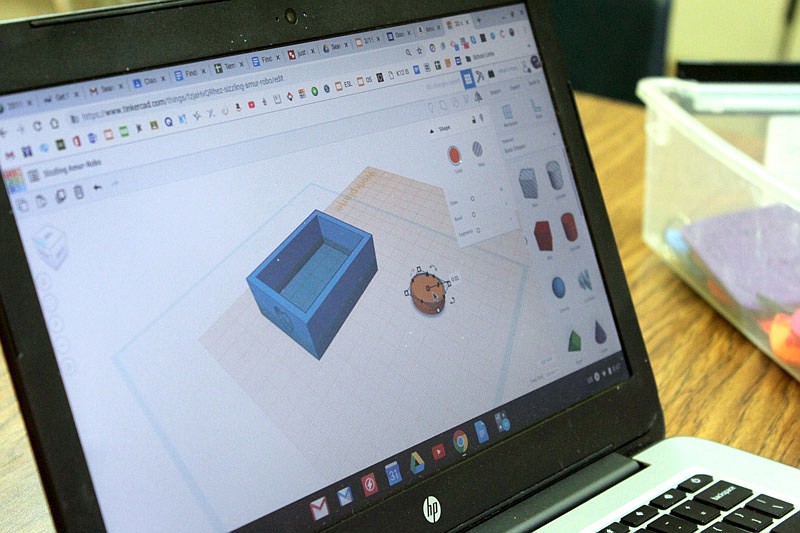School is a little different for some California Middle School students, as they are learning a different form of art. But the art doesn't require an easel or a paintbrush: it's all about computers and a little bit of math.
Jeanne Beck, CMS technology teacher, first introduced a class on the beginning stages of 3-D printing April 22. The class moved together through Tinkercard, a program that allows students to ease into the method of bringing computer-generated pixels to life.
The students' first mission was to make gifts for teachers in the middle and elementary school.
"I have kids make Google forms for teachers to fill out what they want made," Beck said. "The teachers choose their color, the logo and what they want it to say."
After this, students design the desired piece of art, but a new measuring system must be understood.
"Everything is in metric," Beck said. "If you want to move an object or a layer, it's always just 1 millimeter."
Once the design process is complete, students then send the digital copy to the 3-D printer hyperdoc which is usually whirring up a new project in Beck's classroom. Depending on the design, the process could take anywhere from 20 minutes to four hours.
"The printer uses ABS plastic, which is basically a Lego," Beck said. "PLA plastic is what they use to make soda bottles. I have a few different colors of the ABS plastic, and the kids say it looks like a weed whacker."
While students can see the printer at work and know the design process, they also must learn the different parts of the printer itself.
Through the 3-D printing process, Beck's students are learning how their new projects can help others in their school.
"We have a science teacher, Ms. Bishop, who decorates her classroom as a big rain forest," Beck said. "There are preschool classes that take a tour of it sometimes. We make beetles and other bugs for her room. It's just so neat to see the kids learn how to make something like this and having them say, 'This is something I can do and didn't even realize it.'"
Beck has been able to show her students how this craft can translate into other fields of study. She said one project they could do is make autographs of former presidents for history classes.
Outside of school, 3-D printing has been used in doctor's offices, on athletic fields and many other places.
"I have a dentist in Jefferson City who can make 3-D molds of molars made in a computer for you in less than an hour," she said. "Athletes have also been able to make 3-D printed shoes. They just print the sole of the shoe, not the whole shoe."
All around CMS, one can find signs labelling different parts of the school. These small, but useful pieces have all been made by Beck's students.
"It's good to see them find ways of making this useful," Beck said. "The kids are really excited when the signs go up. It helps them to see what they can do from what they learn."

